A large-scale development plan in Hong Kong that received government approval in late 2024 is drawing criticism from environmental groups, who have voiced concerns over the planned destruction of coastal wetlands.
The 74,000 acre Northern Metropolis project will bring 2.5 million new residents to Hong Kong’s New Territories, transforming farm and village land into commercial, housing and leisure areas, centered around the San Tin Technopole, a 1,550 acre innovation and technology (I&T) park modeled after Silicon Valley. The technopole will be positioned across the Sham Chun river from a nearly identical I&T campus in Shenzhen, which Hong Kong’s Development Bureau says will create “increased synergy” with Mainland China. Together, the two campuses will form the Hetao Shenzhen-Hong Kong Science and Technology Innovation Cooperation Zone.
The Hong Kong development project will be built on land that currently houses San Tin’s manmade wetlands, which were constructed in the 1960s as part of a large aquaculture network including fish and shrimp farms. The wetlands are recognized by environmental scientists for their role in preserving endangered species, as well as carbon dioxide sequestering mangrove forests. The ponds are a vital stopover point for more than 50,000 migrating birds each year, which eat leftover and unwanted fish. The wetlands also create a physical barrier between Hong Kong’s metropolitan area and the large swaths of untouched land in the New Territories.
By 2027, most of the ponds are scheduled to be filled in to make way for the technopole. Green groups including the Hong Kong Bird Watching Society (HKBWS) have criticized the government’s decision to expedite development for the project, and a coalition of 10 organizations submitted a petition to review the Environmental Impact Assessment (EIA) report in June 2024.
The project also threatens to displace community members, including tenant farmers who practice traditional fish farming techniques, and reduce an already limited supply of locally produced food.
“The science parks are incubators – they’re good for research but they don’t produce anything, that’s one of the big problems,” said Man Kim Fung, who lives in the San Tin village. He is a member of the Man clan, a family with ancestral roots in the area that date back more than five centuries. According to Man, the development will contribute to what he sees as a startling trend: the migration of production from Hong Kong to mainland China.
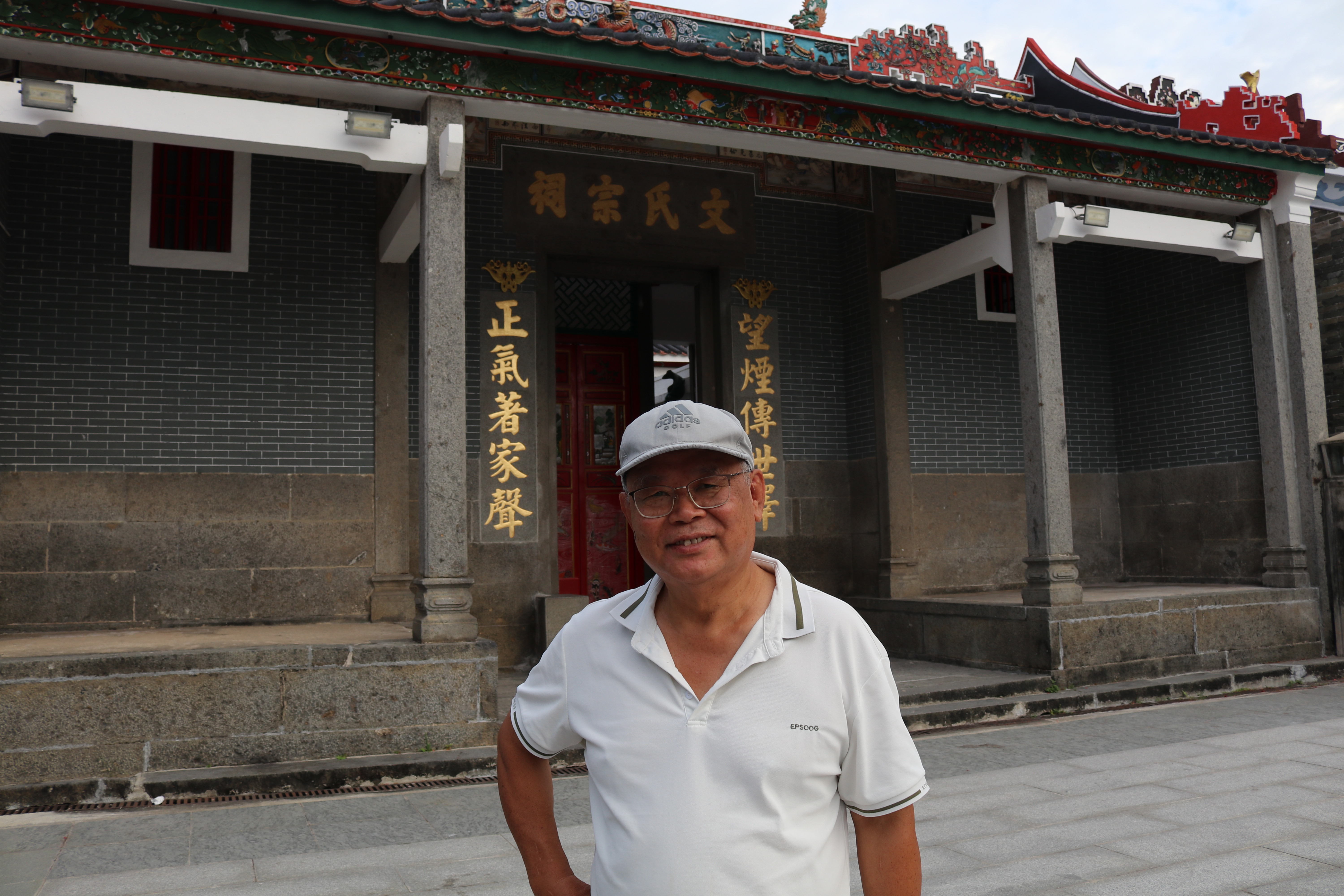
Man Kim Fung stands outside of one of his family’s ancestral halls in San Tin (Hong Kong, Nov. 2024). Photo by Katie Schulder-Battis
Hong Kong relies on imports for more than 95 percent of its food, and has been ranked the world’s ninth largest importing trade entity, with Mainland China as its primary trading partner. In addition to contributing to increased risks of food shortages through dependence on China for food, a recent report on Hong Kong’s seafood trade suggested that as much as 50 percent of seafood imports lack documentation, including health certifications.
Man also believes that the development signals the encroachment of Mainland China’s control over the autonomous region, heralding the beginning of a new era of interference.
“In Shenzhen they’re probably saying, ‘We’re prospering, but Hong Kong side [across from Shenzhen] is so quiet – patty fields,’ and they’re probably thinking, ‘Why can’t we make use of it?’” Man said, adding that the 50 year period of independent governance for Hong Kong is set to expire in 2047. “There’s only about 20 years left, so they’re thinking, ‘How do I get this land?’”
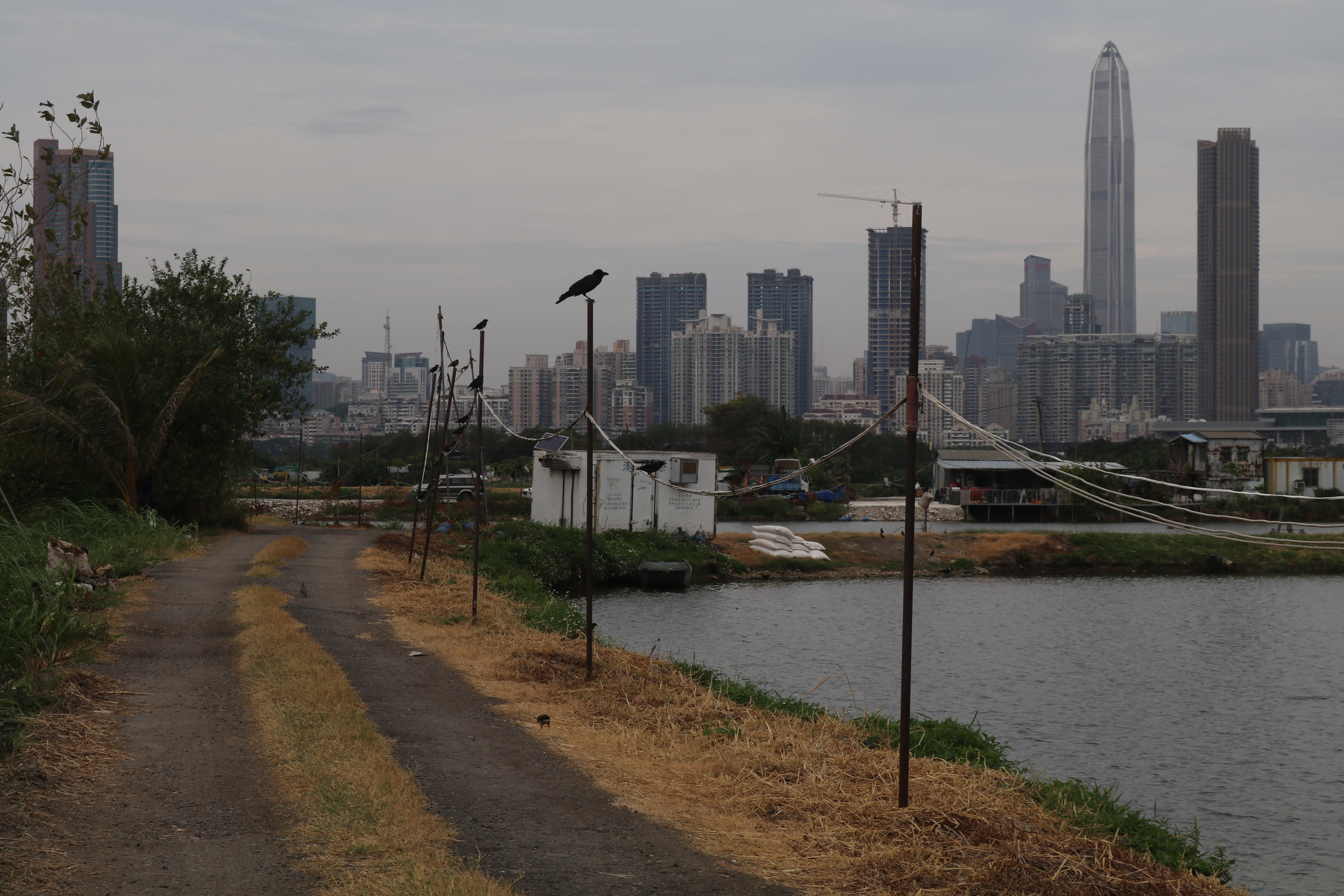
Shenzhen’s skyline looms across the Sham Chun river from San Tin. Photo by Katie Schulder-Battis.
In a 2024 policy address, Hong Kong’s Chief Executive John Lee Ka-chiu stated that the project will capitalize “on the strengths of ‘One Country, Two Systems’ with the geographic advantages of ‘one river, two banks.’” He also noted that it will serve as a “pilot production base for industries, a hub for pooling global I&T resources, as well as a testing ground for institutional and policy innovation.”
This announcement came one year after the chief executive released the 2023 Blueprint for Sustainable Development of Agriculture and Fisheries, in which he introduced an “aggressive” plan to protect and expand Hong Kong’s local agriculture industry. Specifically citing fish culturing as a focus area for expansion, Lee laid to a plan to double production of local cultured fish by 2028.
A government press release addressing the blueprint stated:
“Due to Hong Kong’s rapid development, our agricultural and fisheries industries have come to a standstill or even shrunk, causing young people to avoid the industries,” Secretary for Environment Tse Chin-wan said. “But Hong Kong’s agriculture and fisheries industries have a rich and significant history and are deeply rooted in the local cultural heritage.”
According to Man, the land would be better used as a green space. “Shenzhen has nowhere to breathe,” Man said. “If you remodel the fish ponds as a park, you’d have a beautiful space.”
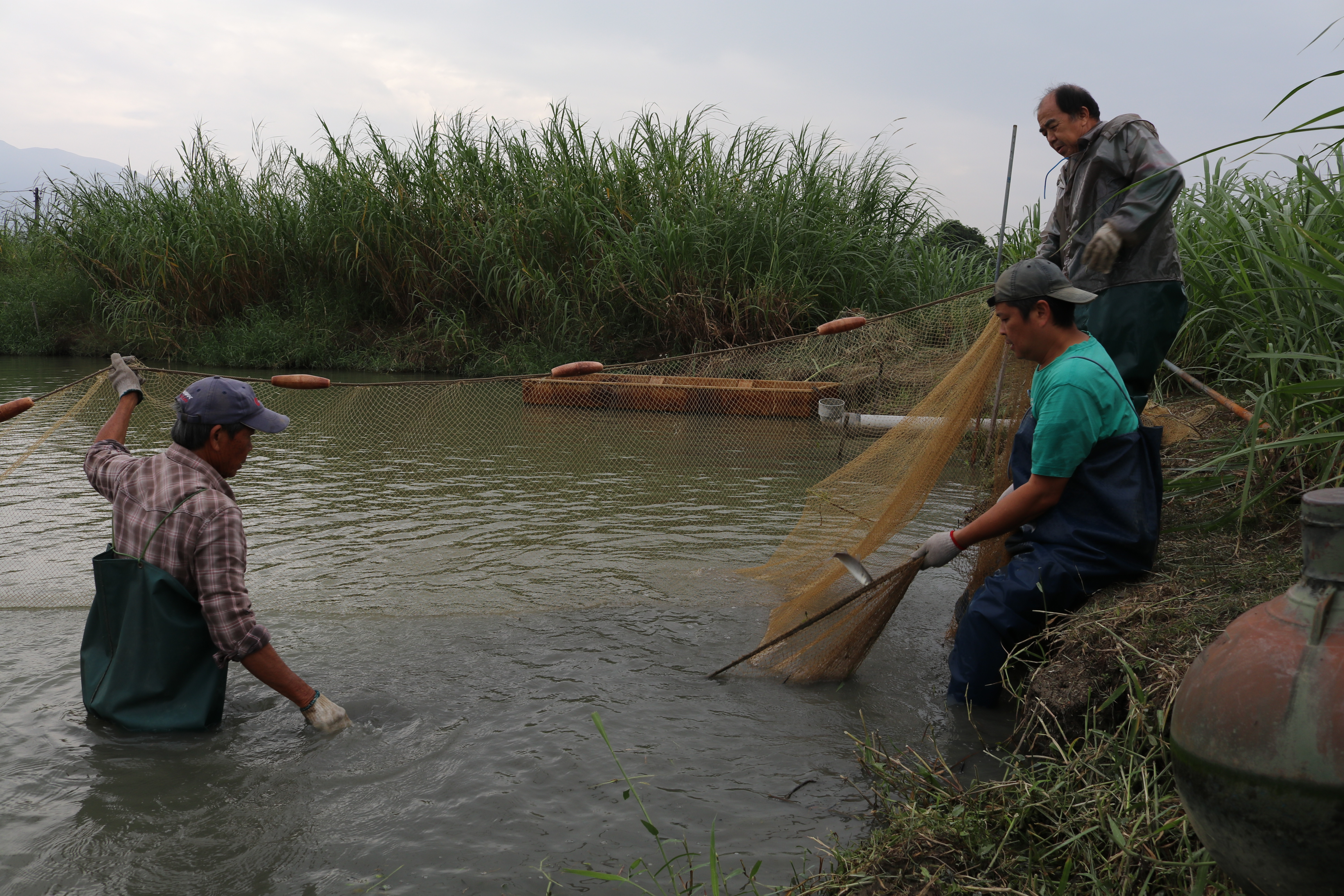
Chan Kwok-sun, 73, catches fish in one of the ponds that he and his family have rented in San Tin for more than 35 years. (Hong Kong, Nov. 2024) Photo by Katie Schulder-Battis.
The initial plan for the Northern Metropolis allocated more than 1,200 acres for a wetland conservation park aimed at protecting the area’s local ecology. However, more recent blueprints show the conservation area reduced by nearly one-third of its size to only 835 acres.
During a two month period for open feedback from the Town Planning Board, residents were invited to voice concerns as well as support for the project. Of the 1,543 responses, more than 80 percent expressed concerns about the ecological impacts of the San Tin Technopole. Although the Environmental Impact Assessment is still under judicial review, a government infrastructure and logistics bulletin stated on September 20, 2024 that “[t]he Government will not, and should not, halt a project that will bring benefits to society simply because an individual has applied for a judicial review.”
A May 17, 2024 statement from the Hong Kong Development Bureau (DEVB) made claims that the project will “achieve no-net-loss in the ecological function and capacity of wetland” and that it will even “enhance the ecological value of the existing wetland.”
In response to a request for comment, the DEVB told The Diplomat, “Northern Metropolis has abundant and diverse habitats, for example, wetlands, fish ponds, swamps, reed beds and mangroves. These natural resources will be conserved and enhanced through proactive Government measures.”
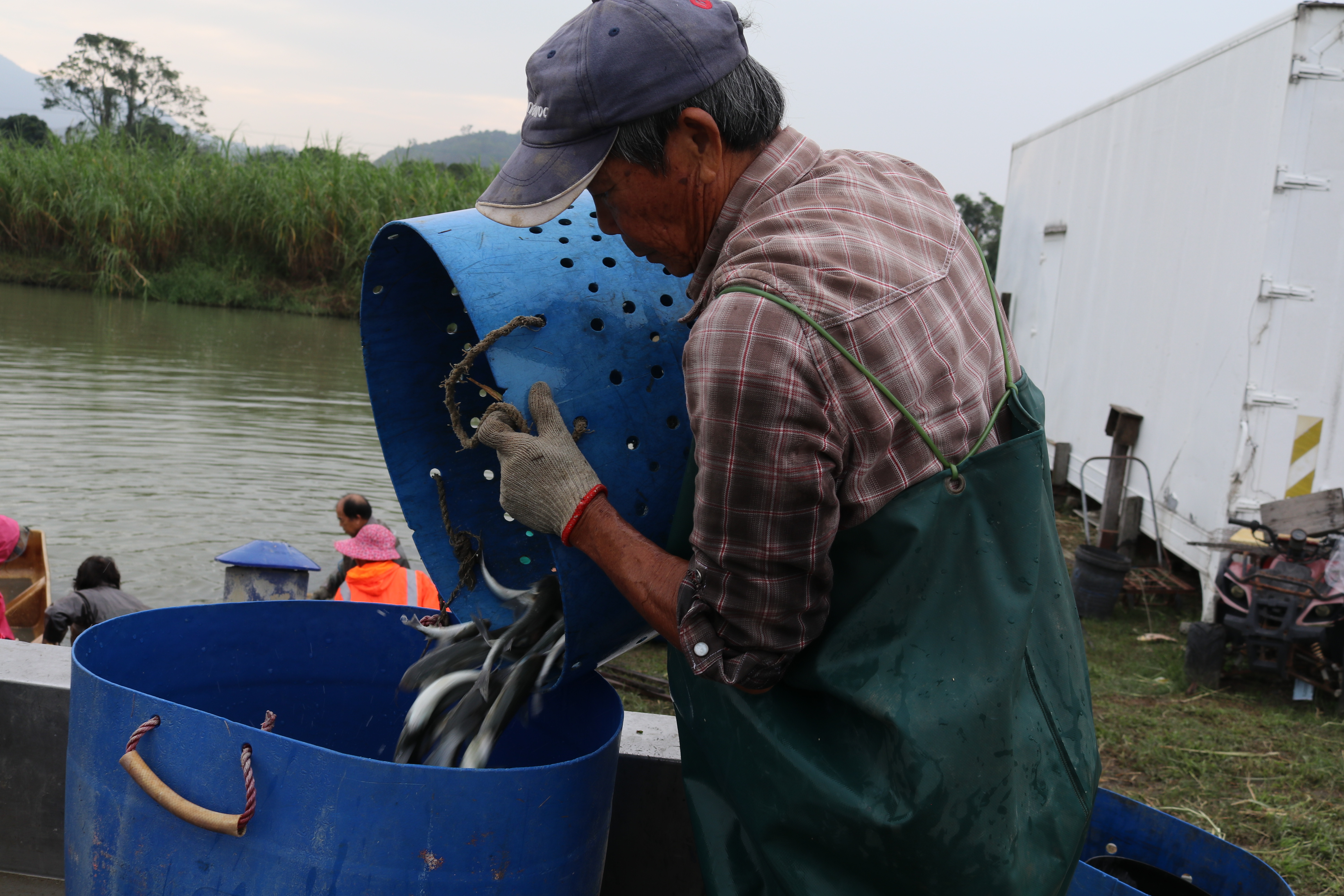
Chan Kwok-sun uses buckets to manually transfer fish between ponds (Hong Kong, Nov. 2024). Photo by Katie Schulder-Battis.
The DEVP stated:
Within the [conservation] park, 40 ha [hectares] of fishponds will be reserved as a “Fisheries Enhancement Zone” for implementing high-density, high-tech and high-yield aquaculture operations… 253 hectares of the park will be reserved as “Ecologically Enhanced Fishponds” that serve both dual purposes of nature conservation and pond fish culture. These “Ecologically Enhanced Fishponds” will primarily adopt traditional aquaculture operations, while suitably complemented by modernized aquaculture techniques (such as remote monitoring system, automated feeding system, use of renewable energy) to enhance production efficiency.
As part of an unaffiliated project, members of Hong Kong University’s architecture faculty are already working with local fish farmers in San Tin to pilot a series of prototypes for devices that could keep traditional fish farming alive by streamlining operations. The devices are aimed at reducing costs by using solar power, and reducing losses of yield by more closely monitoring the conditions within the ponds.
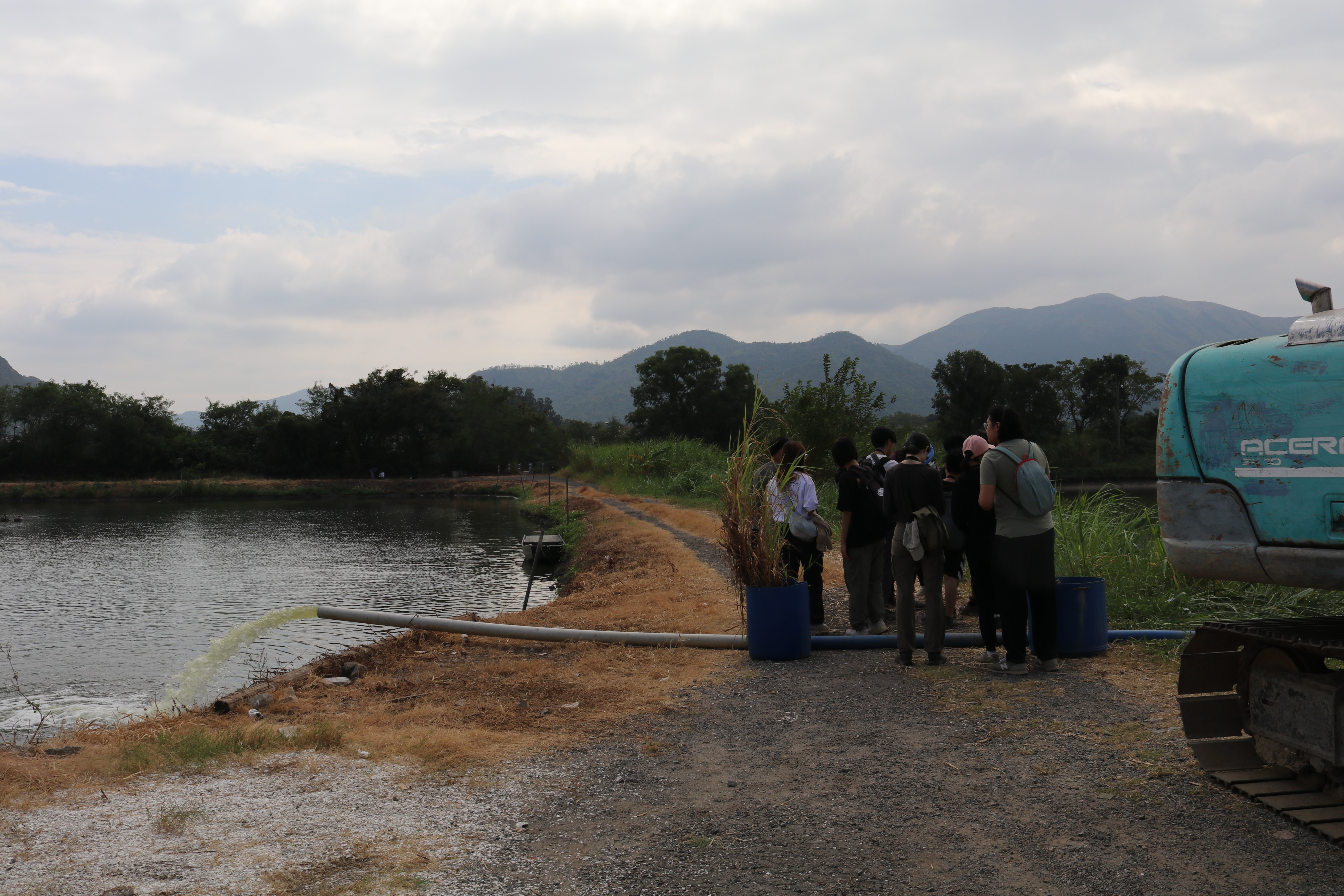
Jersey Poon, a University of Hong Kong architecture faculty member, gives a walking tour of the devices developed for the San Tin fish ponds (Hong Kong, Nov. 2024) Photo by Katie Schulder-Battis.
Joshua Bolchover, a professor at the University of Hong Kong (HKU) who has studied the Hong Kong-Shenzhen border for more than a decade, believes that the Northern Metropolis could follow a design that preserves some of the unique features of the area.
“What exactly the Northern Metropolis will become is still unknown,” Bolchover told The Diplomat. “What we do know is that it shouldn’t just replicate another generic piece of urban development. Instead, there is a chance to make it a unique place that harnesses its current attributes.” According to Bolchover, the area is a rare example of nature coexisting with human activities.
The installation is aimed at bringing public attention to the area, Bolchover said. The exhibition is open to the public, and can also be viewed through guided tours led by HKU faculty.

































